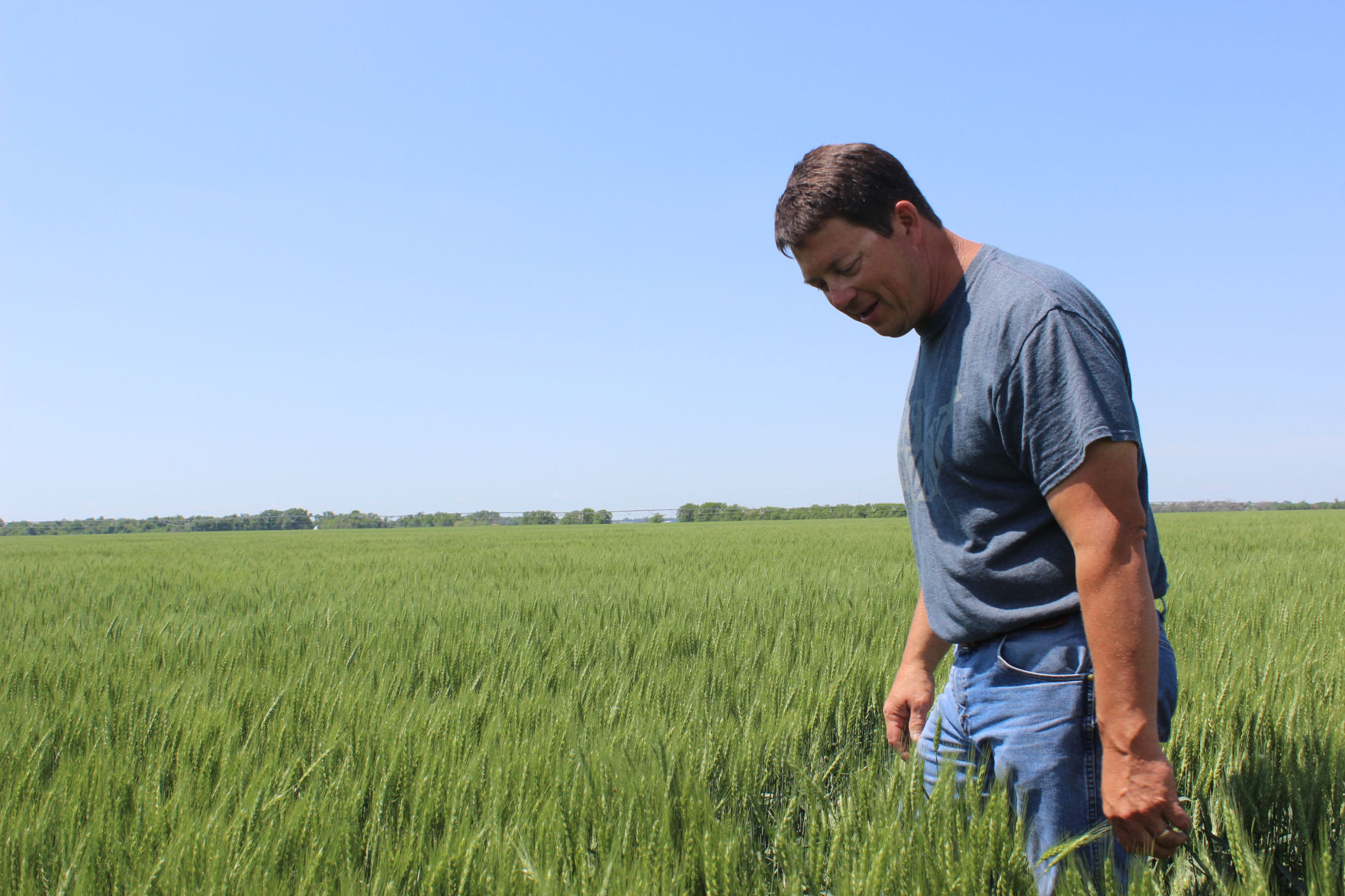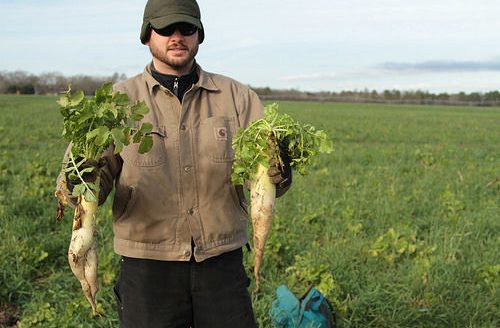About 50 farmers sign letter to Roberts asking that Conservation Stewardship Program be protected

Cameron Peirce just wants to leave his land better for the next generation.
The Reno County, Kansas, farmer talked about his ambitions as he drove his pickup to the center of one of his wheat fields, checking on an irrigation pump on a hot May afternoon.
He has plans for the field and others like it, he said. One primary focus is to establish cover crops and improve soil health on his no-till fields. He also wants to do more nutrient management programs, which will help assure he isn’t overapplying inputs like fertilizer, which could eventually run into the nearby Red Rock Creek and into the Ninnescah River.
Earlier this year, Peirce applied for a farm bill program that would help him make these changes. Now he and others fear that program might be ending.
The House markup of the farm bill, which failed to pass on May 18, calls for eliminating the Conservation Stewardship Program—the bill’s largest working-lands conservation program. It currently has more than 72 million acres enrolled—roughly the size of Nevada.
CSP, however, has been successful across the country helping farmers implement best management practices, said Peirce. He received incentives through an earlier version of the program in 2004—then called the Conservation Security Program. It helped him transition to no-till farming and implement grid sampling.
“We want to try to do the best job we can,” Peirce said. “We aren’t out there to take, take, take. We want to leave the land much better than how we found it. And I think CSP is the program that allows us to do that.”
Peirce is among 50 Kansas farmers who signed and sent a letter to Sen. Pat Roberts, R-KS, chairman of the Senate Agriculture Committee, in support of conservation and crop insurance practices in the next farm bill.
The farmers stressed that Conservation Title funding, especially for programs like CSP and the Environmental Quality Incentives Program, needs to be protected. They knew from their experiences that conservation practices reduce risk and enhance profitability.
For instance, the letter said, planting cover crops and engaging in no-till and rotational grazing help build soil health, lessen disease pressure and improve the resiliency of rangeland.
However, farmers and ranchers identify risk as a major barrier in adopting conservation practices, the letter stated.
Incentives programs like CSP are vital to build and maintain a resilient agriculture, especially amid low crop prices, ever-changing weather patterns and governmental regulation, said Jim French, senior advisor/consultant with the Center for Rural Affairs.
French said programs like CSP provide benefits for public health, including clean water and clean air. He noted farmers’ work in Kansas’ Cheney Lake Watershed is one of the success stories regarding the impact on water quality for Cheney Lake, a source of drinking water for residents in Wichita.
“We complain about regulations and government being heavy handed, but these are the programs that go in the opposite direction,” said French, who also farms and ranches in Reno County.
The voluntary programs work in step with government agencies like the Natural Resources Conservation Service. Moreover, farmers selected for the program are already high-level conservationists.
French said the House version of the farm bill folds CSP into EQIP. But EQIP focuses on specific conservation practices with a one-time cost-share arrangement. CSP, meanwhile, helps farmers implement comprehensive conservation practices on a whole-farm system.
French said his concern is the program won’t be adequately funded and that the CSP component would be “watered down.”
The 2014 farm bill had already slashed the Conservation Title by about $4 billion over 10 years, French said.
Also, he said, according to the Sustainable Agriculture Coalition, the draft bill proposes to cut funding for working lands conservation programs by 25 percent, or about $4.3 billion, over five years and 20 percent, or $7.1 billion, over 10 years.
Current CSP contracts, however, which farmers can operate under for five years, will be honored, he said.
French and his wife, Lisa, were part of the old CSP program in 2005. They used funds to transition to no-till farming, bury pipe and install alternative water sources for their cattle. The couple also built cross fences for rotational grazing.
“It got us beyond where we were before,” French said, adding the change in the operation paid off during the 2011 and 2012 drought.
“Even though we did destock some, our pastures were in better shape,” he said.
Andy Hineman, who farms with his dad, Don, in Lane County, said their farm was just approved for another five-year CSP contract. Don was among the farmers who signed the letter.
Previous and current enhancements include implementing no-till, a nutrient management program and tissue sampling, among other tools.
Andy Hineman said NRCS staff score the farm for its practices in place already, then they sit down with the producer to find new enhancements that fit the operation.
“It has to be something new on top of what you are already doing,” he said.
For Peirce, it still comes back to one thing—leaving the land better than it was when he first came back to the farm with his father in 1992. While most farmers are good stewards, he questioned whether, in this economy, farmers can afford to incorporate some of the improvements without programs like CSP.
“I’m the fifth generation, and Connor (my son) is out planting cotton right now, and he is the sixth generation,” he said. “It’s important for us to make sure it sticks around for another several generations.”
Amy Bickel can be reached at 620-860-9433 or abickel@hpj.com.

